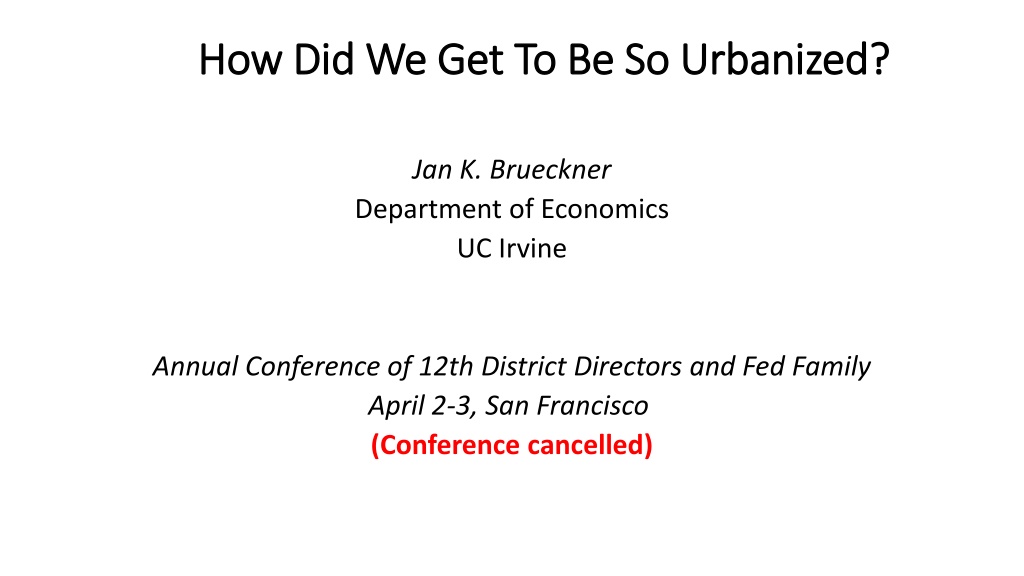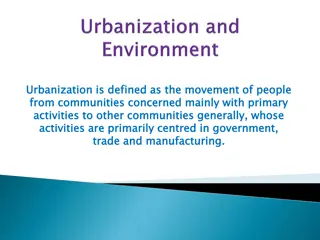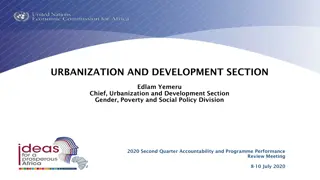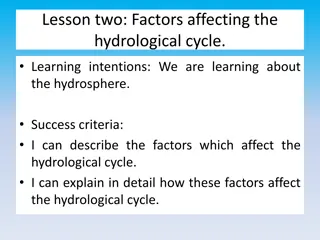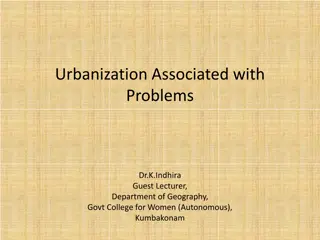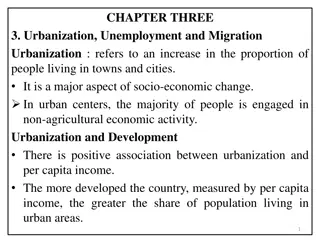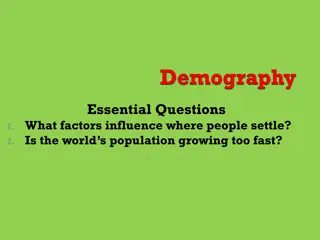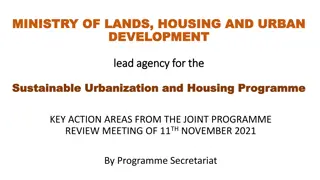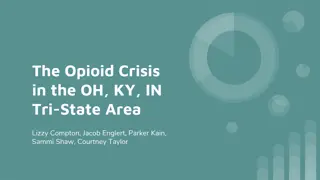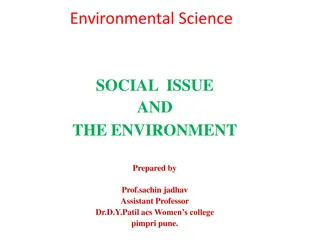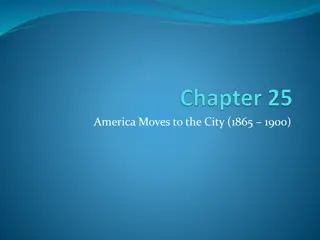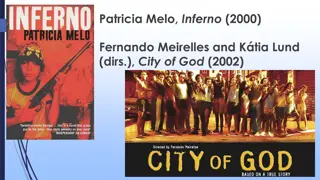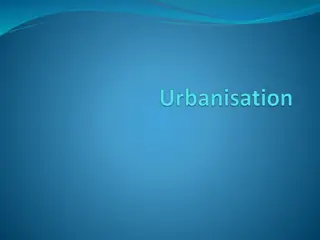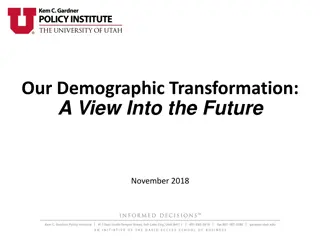Urbanization Trends and Factors Explained
Urbanization has drastically increased over time in the US and globally due to factors like rural-urban migration, industrialization, and the rise of the service sector. This process has led to significant shifts in population distribution and economic activities. While some urban households may be seeking a reversal by moving to small towns, the overall trend of urbanization is likely to continue due to the productivity advantages offered by large cities.
Download Presentation

Please find below an Image/Link to download the presentation.
The content on the website is provided AS IS for your information and personal use only. It may not be sold, licensed, or shared on other websites without obtaining consent from the author.If you encounter any issues during the download, it is possible that the publisher has removed the file from their server.
You are allowed to download the files provided on this website for personal or commercial use, subject to the condition that they are used lawfully. All files are the property of their respective owners.
The content on the website is provided AS IS for your information and personal use only. It may not be sold, licensed, or shared on other websites without obtaining consent from the author.
E N D
Presentation Transcript
How Did We Get To Be So Urbanized? How Did We Get To Be So Urbanized? Jan K. Brueckner Department of Economics UC Irvine Annual Conference of 12th District Directors and Fed Family April 2-3, San Francisco (Conference cancelled)
US Urban Share In the US, the urban share of the population rose from 6.1% in 1800 to 82.5% today 1800 6.1% 1840 10.8% 1880 28.2% 1900 39.6% 1920 51.2% 1940 56.5% 1960 69.6% 1980 73.7% 2000 79.0% 2019 82.5% Current criterion: living in city larger than 50,000 How did we get there?
rural urban No incentive to migrate Low urban productivity
rural urban migration City factory using productive new technology starts up, raising urban wage Rural-urban migration
rural urban migration Rural population shrinks, urban population grows
rural urban migration Rural labor shortage raises wage, spurring mechanization of agriculture and raising productivity City adds factories, and agglomeration economies (productivity spillovers between firms) further raise urban wage
rural rural urban Skilled migration Rise of service sector (office employment) increases return to skills, spurring migration of skilled workers
rural rural urban $ migration equilibrium $ A force that tends to choke off migration is increase in urban cost of living (housing and commuting) as population rises.
Same urbanization process is happening in poorer countries around the world, often much faster than in US. China s Urban Share 1953 13.3% 1990 26.4% 2005 43.0% 2017 58.5% In US, it took about 60 years to go from China s 1990 share to its 2017 share. Urban cutoffs differ too, overstating China s urbanization.
Could a partial reversal of urbanization process occur? Anecdotes suggest some urban households are returning to small towns, seeking quieter life and cheaper housing. But given productivity advantages of big cities, urbanization can t fall by much.
